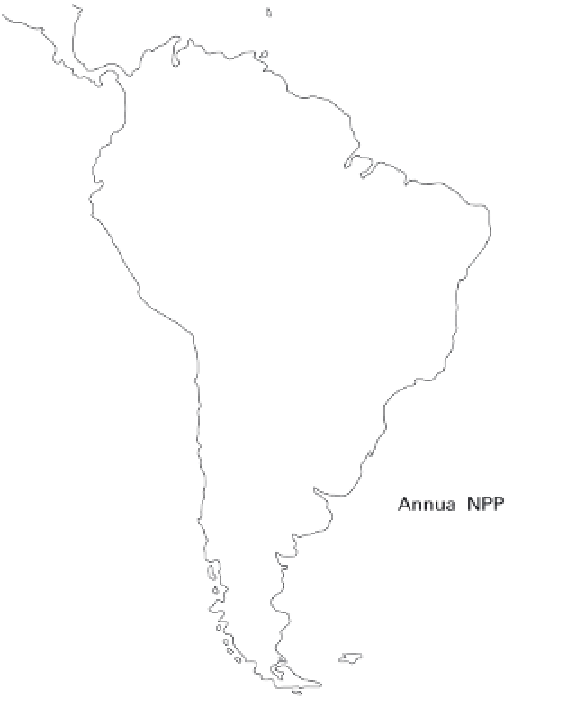Environmental Engineering Reference
In-Depth Information
in plant litter. Meentemeyer, Box, and Thompson (1982)
estimated the worldwide annual leaf fall at 35.1 Gt and
the total litter production at 54.8 Gt, or about half of
the global NPP. Studies in various ecosystems showed
ranges of 5-15 t/ha (@9-26 MJ/m
2
, or 0.3-0.9 W/
m
2
) in tropical forests (11 t/ha may be a good mean)
and mostly 4-8 t/ha (8-16 MJ/m
2
) in temperate and
boreal biomes, where 4.5-5 t/ha may be a typical loss.
Two comparisons illustrate the degree to which
the fossil-fueled civilization depends on accumulated and
transformed products of photosynthesis and some recent
globally significant changes of the process. Photoautotro-
phy is ancient: organic carbon in Archean sediments puts
the first prokaryotic photosynthesizers 3.8 Ga ago (Schi-
dlowski 1991), and massive deposits of fossil fuels attest
to high intensities of NPP during the Phanerozoic eon.
High carbon preservation rates mean that only 5-10 g
C in paleophytomass were needed to produce 1 g C in
anthracites and bituminous coals, whereas the typical
rates were in excess of 10,000 for crude oil and natural
gas (Dukes 2003). The weighted mean of about 7,000
implies that the combustion of about 7.5 Gt C in fossil
fuels in 2005 required initially no less than 50 Tt C in an-
cient phytomass and was equivalent to about 500 years
of the current NPP (105 Gt C); or, assuming terrestrial
phytomass stores of 500-600 Gt C, we have been
consuming every year fossilized phytomass equivalent to
80-100 times today's entire planetary stocks of phyto-
mass carbon.
Advances in satellite monitoring and in the modeling
of NPP have uncovered many fascinating changes of this
key biospheric indicator, both on the global scale over
relatively short periods of time and on regional or conti-
nental scales over extended time spans. During the first
four years of the program, the MODIS-based continuous
3.6 South America's NPP (based on MODIS data). As
expected, the largest area of the highest productivities is in the
Amazon basin (Running et al. 2004).
flux) that the NPP of some ecosystems can be not just
20% but even 50% higher than indicated by the best cur-
rent models. For example, Grace (2001) found that the
NPP of a Brazilian rain forest near Manaus was as high
as 15.6 t C/ha
a (nearly 3.5 kg/m
2
), whereas the total
that neglected fine root turnover was nearly 40% lower.
Such adjustments could make the global NPP markedly
higher than indicated by the recent modeling consensus.
In any case, a large part of NPP is continuously discarded




























































































































































































































































































































































































































































































































































































































































































































































































































































































































































































































